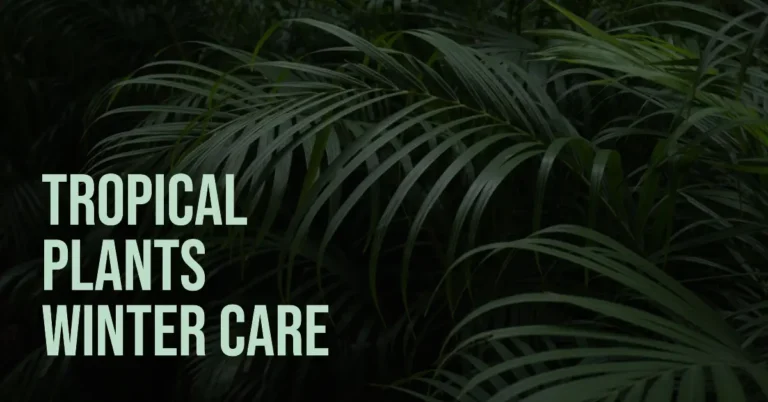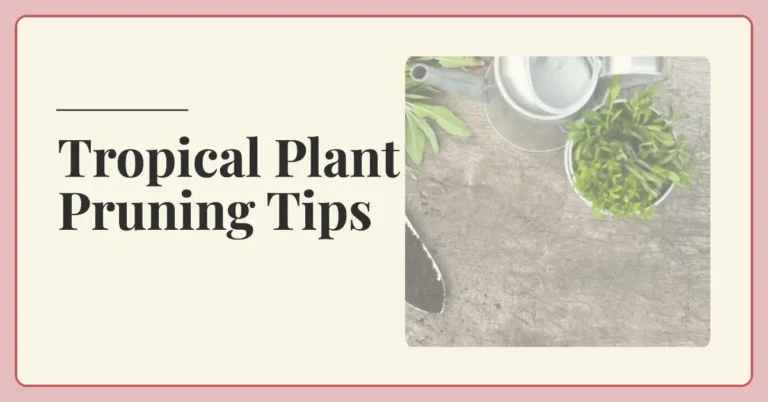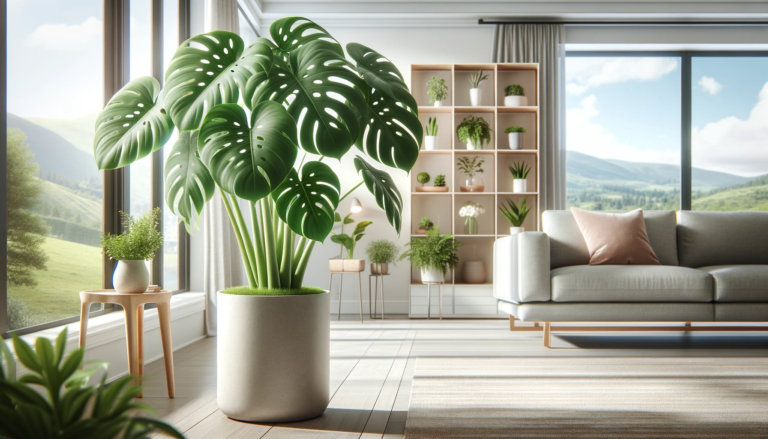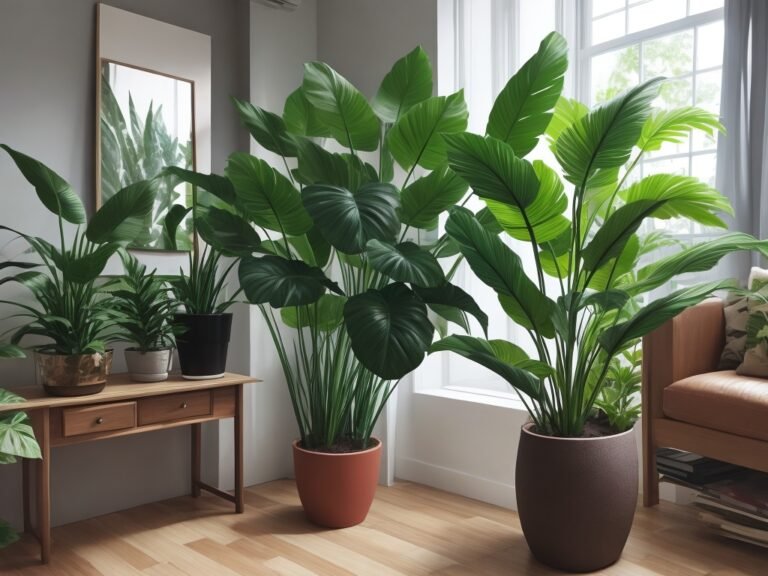Embracing the Jungle: How to Keep Tropical Plants Alive Indoors
Introduction
Do you find yourself enchanted by the verdant and exotic allure of tropical plants? Is the idea of a mini indoor jungle appealing to you? Are you looking for ways to ensure the thriving greenery of your tropical foliage indoors? If a resonant yes echoed through your mind to any of these questions, you’ve landed on the right page. In this article, you will unearth all the essentials about how to keep tropical plants alive indoors. Your journey will traverse through:
- Understanding the essence of tropical plants and what sets them apart from other green cohorts.
- Selecting the ideal tropical plants for your abode, reflecting both your aesthetic taste and the ambient conditions.
- Mastering the art of keeping your tropical plants alive indoors with the right blend of humidity, watering regime, luminosity, soil richness, and nourishment.
- Warding off common plant adversaries like pests and diseases to ensure lush, uninterrupted foliage.
- The seasonal rituals of overwintering, pruning, repotting, or propagating your tropical verdancy.
As you navigate through this verdant narrative, not only will you gather the wisdom to nurture a vibrant tropical haven indoors, but also stumble upon handy links, videos, and FAQs to bolster your green thumb. So, are you ready to embrace the leafy voyage into the realm of tropical flora? Let’s unfurl this green story!
What are Tropical Plants?
Nestled between the warm embrace of the Tropic of Cancer and the Tropic of Capricorn, the tropics are the cradle of a myriad of plant species known as tropical plants. This region, blessed with the caress of high temperatures, generous rainfall, and a tapestry of vegetation, nurtures these unique botanical beings.
Tropical plants, with their evolutionary genius, have morphed to dance to the tunes of these tropical climes. Their adaptive traits include:
- Thick and glossy leaves cast back the sun’s glare while guarding against moisture loss.
- Flamboyant flowers, a visual feast, beckoning pollinators for a quick reproductive rendezvous.
- Aerial roots or whimsical vines, entwining around companions or structures, sipping moisture from the tropical breath.
- Spiny armors or hairy coats ward off the advances of predators or parasites.
- Fragrant or succulent fruits entrust their seeds to the whims of animals or humans for dispersion.
Dive into the verdant diversity of tropical plants, and you’ll meet:
- Orchids: A symphony of shapes, hues, and sizes, these beauties are coveted for their ethereal looks and fragrance. Their abode ranges from trees and rocks to the humble soil.
- Bromeliads: Their leaves weave a rosette, cradling water and nutrients, often showcasing colorful bracts or spikes sheltering flowers.
- Palms: Singular in stem yet crowned with a halo of leaves, they can touch the sky or nestle indoors, sometimes offering the sweet bounty of coconuts or dates.
- Ferns: With a delicate frondescence but a staunch heart, they forgo flowers and seeds, embracing the ancient way of spores for their lineage.
- Anthuriums: Heart-shaped leaves cradle a spathe, a leafy embrace to a spire of minuscule blooms known as a spadix, presenting a visual delight in red, pink, white, or green.
Tropical plants stand apart from their botanical brethren, molded by the warm, humid cradle of the tropics. Their thirst for water, light, and a moist breath is more pronounced, demanding a vigilant eye to ward off pests and diseases.
Keeping tropical plants alive indoors is not just a horticultural endeavor but a pact with nature. They reciprocate with:
- Breathing purity into your space, banishing toxins, and bestowing oxygen.
- Weaving a calm, soothing green tapestry to allay your stress
Therefore, it is crucial to choose the right tropical plants for your home based on your preferences and conditions. In the next section, we will show you how to do that.
Keeping Indoor Tropical Plants Alive: Selecting the Right Flora for Your Home
Choosing the right tropical plants for your home can be a fun and rewarding experience. However, it can also be a daunting and confusing task. There are many types and varieties of tropical plants, each with its features and requirements.
To make the process easier and more enjoyable, you need to consider some criteria or factors before you buy or adopt any tropical plants. These include:
- Your personal preference: This is the most essential factor to consider. You need to choose tropical plants that you like and enjoy. Think about what plants appeal to you in shape, color, size, texture, fragrance, or fruit. Do you prefer flowering or foliage plants? Do you like large or small plants? Do you like exotic or familiar plants? Do you like fragrant or edible plants?
- Your home condition: This is the second most crucial factor to consider. It would help if you chose tropical plants that suit your home environment. Think about what kind of conditions you can provide for your plants in terms of humidity, watering, light, temperature, and space. Do you have a humidifier or a misting bottle? Do you have a watering schedule or a moisture meter? Do you have a sunny window or a grow light? Do you have a warm or cool room? Do you have a large or a small space?
- Your plant care skill: This is the third most important factor to consider. It would be best if you chose tropical plants that match your level of experience and expertise. Think about how much time and effort you can devote to your plants regarding maintenance, prevention, and treatment. Do you have a green thumb or a brown thumb? Do you have a lot of time or a busy schedule? Do you have a lot of patience or a short temper? Do you have a lot of knowledge or a lot of questions?
Based on these criteria, you can narrow your choices and find the best tropical plants for your home. To help you further, here are some suggestions or recommendations based on different preferences or conditions:
- Suppose you like flowering plants that are easy to care for and can tolerate low light. In that case, you can try African violets, Peace lilies, Begonias, or Hoya.
- Suppose you like foliage plants that are hardy and resilient and can adapt to various environments. In that case, you can try Snake plants, ZZ plants, Philodendrons, or Pothos.
- If you like exotic plants that are unique and stunning and can thrive in high humidity, you can try Birds of Paradise, Bromeliads, Orchids, or Anthuriums.
- If you like edible plants that are delicious and nutritious and can grow in containers, you can try Bananas, Pineapples, Lemons, or Mint.
Of course, there are other options available. There are many more types and varieties of tropical plants that you can explore and experiment with. The key is to do some research and learn as much as you can about each plant before you bring it home.
In the next section, we will show you how to care for your tropical plants indoors once you have chosen them.
How to Care for Tropical Plants Indoors
Caring for tropical plants indoors can be a rewarding and satisfying hobby. However, it can also be a challenging and frustrating one. Tropical plants have different needs and preferences than other plants, and they can be more sensitive and demanding.
To keep your tropical plants alive and healthy indoors, you need to provide them with the optimal conditions and care that they require. These include:
- Humidity: This is the amount of moisture in the air. Tropical plants need high humidity to prevent their leaves from drying or wilting. The ideal humidity level for most tropical plants is between 50% and 70%. To increase the humidity around your plants, you can:
- Use a humidifier or a misting bottle to spray water on your plants regularly.
- Place your plants on a tray of pebbles or gravel filled with water, but ensure the water does not touch the bottom of the pots.
- Group your plants together to create a microclimate of moist air
- Move your plants away from sources of dry air, such as heaters, air conditioners, or fans.
- Watering: This is the amount and frequency of water you give your plants. Tropical plants need regular watering to keep their soil moist but not soggy. The ideal watering schedule for most tropical plants is once or twice a week, depending on the season, temperature, and plant type. To water your plants properly, you can:
- Use room temperature or lukewarm water to avoid shocking your plants.
- Water your plants thoroughly until the water drains out of the holes at the bottom of the pots.
- Allow the top inch of the soil to dry out slightly between waterings.
- Check the soil moisture with your finger or a moisture meter before watering.
- Avoid overwatering or underwatering your plants, as both can cause root rot, leaf drop, or yellowing.
- Light: This is the amount and intensity of light your plants receive. Tropical plants need bright but indirect light to perform photosynthesis and produce energy. The ideal light level for most tropical plants is between 1000 and 2000-foot candles. To provide enough light for your plants, you can:
- Place your plants near a window that faces east, west, or south, but avoid direct sunlight that can scorch or fade your plants.
- Rotate your plants every few weeks to ensure even growth and prevent leaning.
- Use artificial lights such as fluorescent tubes, LED bulbs, or grow lights to supplement natural light.
- Adjust the distance and duration of the artificial lights according to your plant’s needs.
- Soil: This medium supports your plant’s roots and provides nutrients and water. Tropical plants need well-drained and aerated soil that retains moisture but does not become compacted or waterlogged. The ideal soil mix for most tropical plants combines peat moss, perlite, vermiculite, and compost. To prepare and maintain good soil for your plants, you can:
- Use pots with drainage holes at the bottom and saucers underneath to catch excess water.
- Add coarse material such as gravel, bark, or charcoal to improve drainage and prevent root rot.
- Repot your plants every year or two when they outgrow their pots or become root-bound
- Loosen the soil around your plant’s roots gently with a fork or a chopstick to improve aeration.
- Fertilizer: This substance adds nutrients to your plant’s soil and enhances its growth and health. Tropical plants need regular fertilization to replenish the nutrients depleted from the soil over time. The ideal fertilizer type and amount for most tropical plants is a balanced formula (10-10-10) applied at half-strength every two weeks during the growing season (spring and summer). To fertilize your plants correctly, you can:
- Use organic or synthetic fertilizers that are suitable for tropical plants.
- Follow the instructions on the fertilizer package carefully, and do not overfeed your plants.
- Water your plants before and after fertilizing to prevent salt buildup and root burn.
- Stop fertilizing your plants during the dormant season (fall and winter) when they need less nutrients.
Following these tips and guidelines, you can care for your tropical plants indoors and keep them alive and healthy. However, sometimes, things can go wrong, and your plants can suffer from pests or diseases. In the next section, we will show you how to prevent and treat these problems.
Navigating Pests and Diseases: How to Keep Tropical Plants Alive Indoors
Ensuring the well-being of your tropical plants involves a vigilant eye towards the common adversaries – pests and diseases. Keeping tropical plants alive indoors often meanders through the path of prevention and cure regarding these unwelcome visitors. Unlike their botanical cousins, tropical plants tend to be more susceptible to pests and diseases, demanding a more nuanced approach to safeguard their health.
Pests, the unsolicited guests, range from insects, and mites to snails, gnawing on or harming your green companions. On the flip side, diseases orchestrated by fungi, bacteria, or viruses play havoc with your plant’s health. The narrative of pest and disease infestation unfolds through symptoms like:
- Discoloration of leaves, stems, or flowers
- Deformation of the same
- Dropping of leaves, buds, or blooms
- The appearance of holes or spots
- Sticky or powdery tales told on leaves, stems, or flowers
- Webbing or trails weaving a story of infestation
To keep the narrative of keeping your tropical plants alive indoors on a positive note, embarking on the following steps could script a healthy storyline:
Inspecting:
The prologue to any action, inspecting your plants for signs of distress, is crucial. Regular and thorough reviews, especially when introducing new green members or changing their spots, are a good preventative measure. A closer look, aided by a magnifying glass or flashlight, unveils the hidden tales of tiny pests or diseases.
Isolating:
An infected or infested plant could play the villain by spreading the woes to its neighbors. Isolating the affected plants prevents the domino effect, keeping the narrative of distress contained.
Treating:
The act of vanquishing the adversaries and treatment with appropriate methods and products tailored for tropical plants could restore the green glory. Following the narrative of instructions and precautions while disposing of the remnants of the battle, like dead or diseased plant parts, is essential.
The arsenal to combat pests and diseases ranges from:
- Mechanical Methods: The physical act of wiping off or washing away the offenders, pruning off the affected parts, or trapping the pests.
- Biological Methods: Introducing the natural adversaries of pests or diseases, like ladybugs or beneficial microorganisms, plays out the classic good versus evil.
- Chemical Methods: When the battle gets tough, chemical methods like insecticidal soaps or systemic pesticides could script a victorious ending.
Through these steps, not only can one keep tropical plants alive indoors but also lay the foundation for a lush, healthy indoor tropical haven.
Enhancing Growth: Overwintering, Pruning, Repotting, and Propagating
The saga of keeping tropical plants alive indoors doesn’t end at mere survival. Overwintering, pruning, repotting, or propagating unfolds the chapters of growth, making your indoor jungle thrive with vigor. Each process, though delicate and demanding skill, promises a rewarding outcome.
Overwintering:
The act of shielding your green companions from winter’s chill and overwintering involves moving your plants indoors, adjusting watering and fertilizing regimes, and keeping a vigilant eye for pests or diseases.
Pruning:
A snip here, a cut there, pruning is the art of shaping your plants and promoting health by removing dead or unwanted parts.
Repotting:
A new abode with more space and fresh nutrients, repotting is like a fresh chapter in your plant’s life, promising more growth and vitality.
Propagating:
The joy of creation and propagating is about scripting new stories by creating new plants from the existing ones.
Following these tips and guidelines, you can overwinter, prune, repot, or propagate your tropical plants and make them grow bigger, better, or faster. You will also have more tropical plants to enjoy or share with others.
This concludes our article about how to keep tropical plants alive indoors. We hope you found it useful and informative. If you have any questions or feedback, please let us know. 😊.
Frequently Asked Questions
- Q: How do I know if my tropical plant needs more or less water?
- A: The best way to check the soil moisture of your tropical plant is to use your finger or a moisture meter. If the top inch of the soil feels dry, then it’s time to water your plant. If the soil feels wet or soggy, you must let it dry out a bit before watering again. You can also look for signs of overwatering or underwatering on your plant’s leaves. If they are yellow, brown, or wilted, then your plant may be overwatered. If they are curled, crispy, or limp, then your plant may be underwatered.
- Q: How do I increase the humidity around my tropical plant?
- A: Tropical plants need high humidity levels to prevent their leaves from drying or wilting. The ideal humidity level for most tropical plants is between 50% and 70%. To increase the humidity around your plant, you can use a humidifier or a misting bottle to spray water on your plant regularly. You can also place your plant on a tray of pebbles or gravel filled with water, but make sure the water does not touch the bottom of the pot. Another option is to group your plants to create a microclimate of moist air.
- Q: How do I choose the best spot for my tropical plant?
- A: Tropical plants need bright but indirect light to produce photosynthesis and energy. The ideal light level for most tropical plants is between 1000 and 2000-foot candles. To choose the best spot for your plant, you can place it near a window that faces east, west, or south, but avoid direct sunlight that can scorch or fade your plant. You can also rotate your plant every few weeks to ensure even growth and prevent learning. Suppose you don’t have enough natural light. In that case, you can use artificial lights such as fluorescent tubes, LED bulbs, or grow lights to supplement it.
- Q: How do I fertilize my tropical plant?
- A: Tropical plants need regular fertilization to replenish the nutrients depleted from the soil over time. The ideal fertilizer type and amount for most tropical plants is a balanced formula (10-10-10) applied at half-strength every two weeks during the growing season (spring and summer). To fertilize your plant correctly, you can use organic or synthetic fertilizers suitable for tropical plants. You can follow the instructions on the fertilizer package carefully, and do not overfeed your plant. You can also water your plant before and after fertilizing to prevent salt buildup and root burn.
Further Reading and Viewing
Best tropical plants: 24 top picks to give your plot an exotic look, Tropical Houseplant Care & Complete Indoor Growing Guide, Thicker-leaved tropical plants may flourish under climate change
Top 40 Beautiful Tropical Flowering Plants with Names and Photos, How To Grow & Care For Tropical Houseplants Indoors, Best Indoor Tropical Plants
Tropical Garden Tour with Exotic Tropical Plants (with plant names!), Tropical Plant Addict, My 50 favorite Houseplant YouTubers







